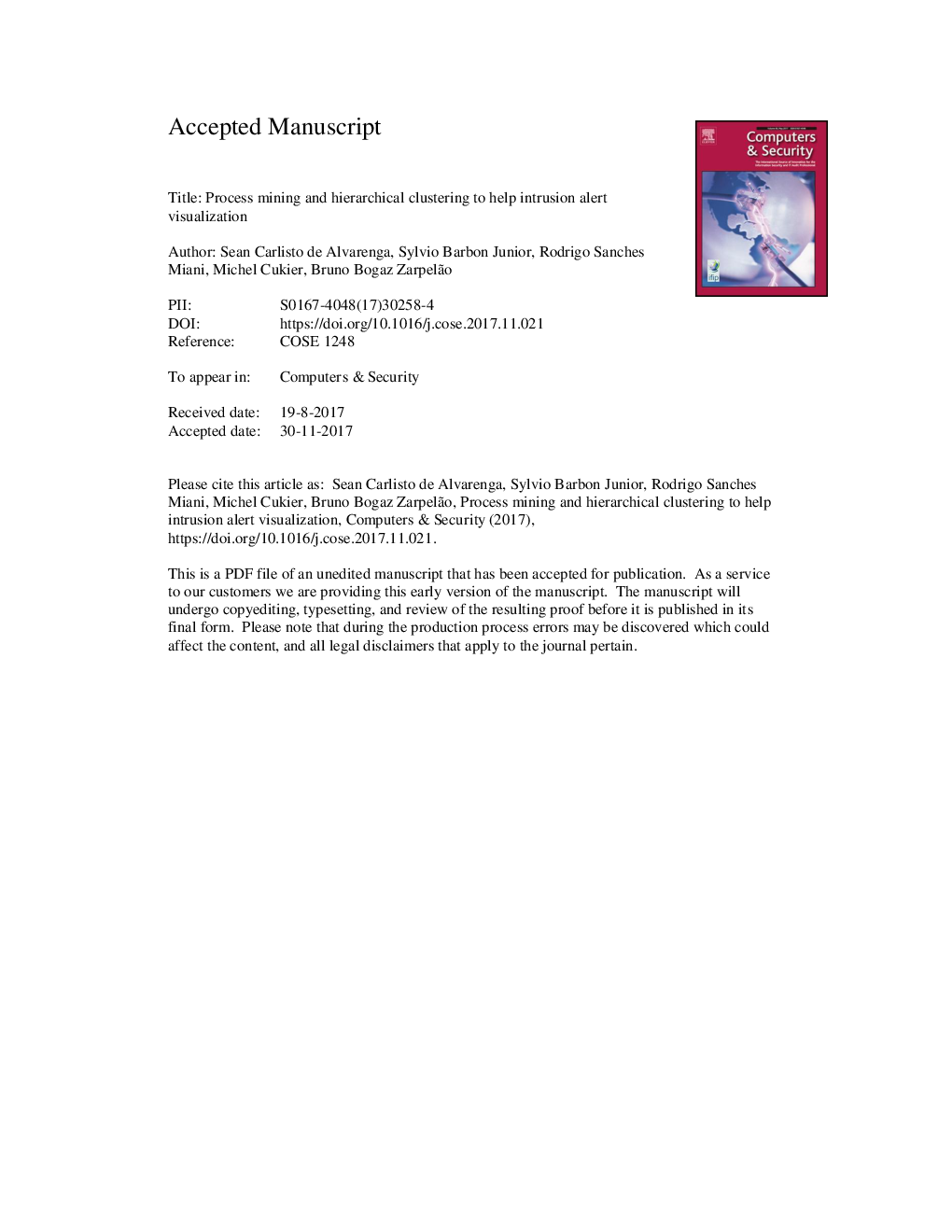ترجمه فارسی عنوان مقاله
فرآیند استخراج و خوشه بندی سلسله مراتبی برای کمک به تجسم هشدار نفوذ
عنوان انگلیسی
Process mining and hierarchical clustering to help intrusion alert visualization
| کد مقاله | سال انتشار | تعداد صفحات مقاله انگلیسی |
|---|---|---|
| 136786 | 2018 | 37 صفحه PDF |
منبع

Publisher : Elsevier - Science Direct (الزویر - ساینس دایرکت)
Journal : Computers & Security, Volume 73, March 2018, Pages 474-491
ترجمه کلمات کلیدی
تشخیص نفوذ، تجسم امنیت، تجزیه و تحلیل امنیتی، هشدار معدن، همبستگی هشدار،
کلمات کلیدی انگلیسی
Intrusion detection; Security visualization; Security analytics; Alert mining; Alert correlation;

